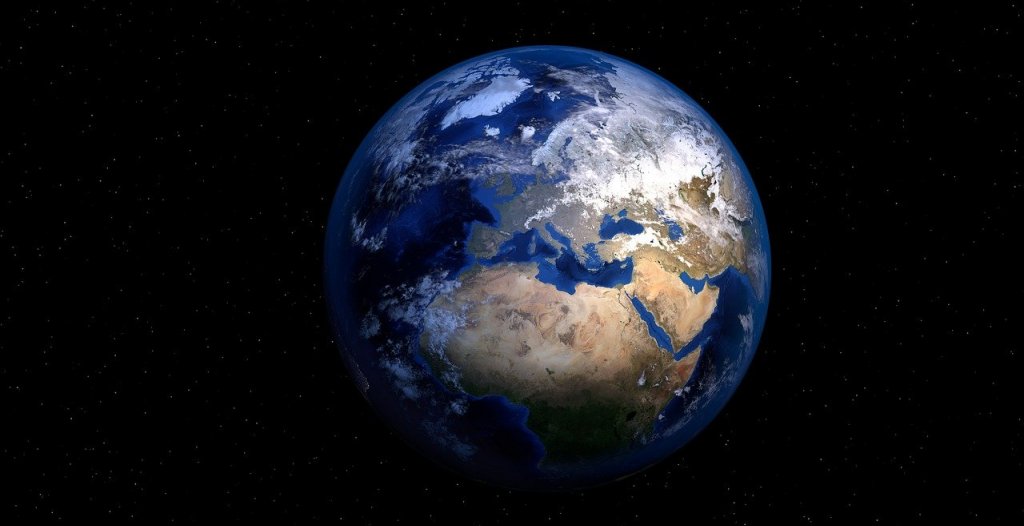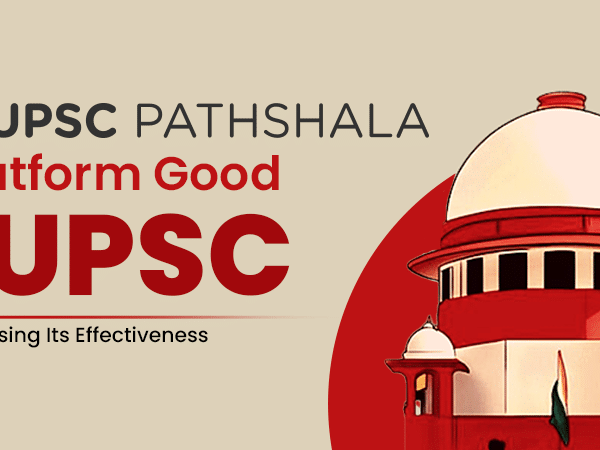Geography is a subject in the UPSC exam which is compulsory as well as optional. Due to this overlap, many students prefer taking Geography as an optional subject. Candidates especially from a science background find it easy to score in it. If you are interested in choosing geography optional then read the article till the end to know the proper strategy and syllabus for the subject.
Geography Optional Strategy
- Firstly only choose Geography optional if you like the subject or you are already good at it.
- Memories the syllabus thoroughly. This should be your first go-to move for any subject if you are preparing for UPSC.
- Keep your reference limited to 2-3 courses including the standard textbooks and material provided to you by coaching classes if joined any.
- After completing each topic, solve the previous year question asked on the topic you finished.
- As we know the optional subject has two papers in IAS Mains. Therefore you also divide the subject into two parts for better understanding.
- Make region vice maps of India. This should be done only by referring to standard books.
- Don’t make notes on each and every topic. It will waste your time. Just have good basic knowledge of every topic.
- When you begin studying for Geography optional start with the most important topics first. Decide 1st month to study topics from Physical Geography.
Geography Optional Syllabus
Paper-I is based on Principles of Geography. The paper-I can again divide into two parts. The contents for physical Geography are:
1. Geomorphology:
Factors controlling landform development; endogenetic and exogenetic forces; Origin and evolution of the earth’s crust; Fundamentals of geomagnetism; Physical conditions of the earth’s interior; Geosynclines; Continental drift; Isostasy; Plate tectonics; Recent views on mountain building; Vulcanicity; Earthquakes and Tsunamis; Concepts of geomorphic cycles and Landscape development; Denudation chronology; Channel morphology; Erosion surfaces; Slope development; Applied Geomorphology: Geohydrology, economic geology and environment
2.Climatology:
Temperature and pressure belts of the world; Heat budget of the earth; Atmospheric circulation; atmospheric stability and instability. Planetary and local winds; Monsoons and jet streams; Air masses and frontogenesis, Temperate and tropical cyclones; Types and distribution of precipitation; Weather and Climate; Koppen’s, Thornthwaite’s and Trewartha’s classification of world climates; Hydrological cycle; Global climatic change and role and response of man in climatic changes, Applied climatology and Urban climate.
3. Oceanography:
Bottom topography of the Atlantic, Indian and Pacific Oceans; Temperature and salinity of the oceans; Heat and salt budgets, Ocean deposits; Waves, currents and tides; Marine resources: biotic, mineral and energy resources; Coral reefs, coral bleaching; sea-level changes; law of the sea and marine pollution.
4. Biogeography:
Genesis of soils; Classification and distribution of soils; Soil profile; Soil erosion, Degradation and conservation; Factors influencing world distribution of plants and animals; Problems of deforestation and conservation measures; Social forestry; agroforestry; Wild life; Major gene pool centres.
5. Environmental Geography:
Principle of ecology; Human ecological adaptations; Influence of man on ecology and environment; Global and regional ecological changes and imbalances; Ecosystem their management and conservation; Environmental degradation, management and conservation; Biodiversity and sustainable development; Environmental policy; Environmental hazards and remedial measures; Environmental education and legislation.
Also Read: A Complete Guide to Score Better in Geography for UPSC: UPSC Exam Strategy
Geography Optional Paper-I Syllabus
The send part of part one is Human Geography. The contents are:
1. Perspectives in Human Geography:
Areal differentiation; regional synthesis; Dichotomy and dualism; Environmentalism; Quantitative revolution and locational analysis; radical, behavioural, human and welfare approaches; Languages, religions and secularization; Cultural regions of the world; Human development index.
2. Economic Geography:
World economic development: measurement and problems; World resources and their distribution; Energy crisis; the limits to growth; World agriculture: a typology of agricultural regions; agricultural inputs and productivity; Food and nutrition problems; Food security; famine: causes, effects and remedies; World industries: locational patterns and problems; patterns of world trade.
3. Population and Settlement Geography:
Growth and distribution of world population; demographic attributes; Causes and consequences of migration; concepts of the over-under-and optimum population; Population theories, world population problems and policies, Social well-being and quality of life; Population as social capital. Types and patterns of rural settlements; Environmental issues in rural settlements; Hierarchy of urban settlements; Urban morphology: Concepts of primate city and rank-size rule; Functional classification of towns; Sphere of urban influence; Rural-urban fringe; Satellite towns; Problems and remedies of urbanization; Sustainable development of cities.
4. Regional Planning:
Concept of a region; Types of regions and methods of regionalisation; Growth centres and growth poles; Regional imbalances; regional development strategies; environmental issues in regional planning; Planning for sustainable development.
5. Models, Theories and Laws in Human Geography:
Systems analysis in Human geography; Malthusian, Marxian and demographic transition models; Central Place theories of Christaller and Losch; Perroux and Boudeville; Von Thunen’s model of agricultural location; Weber’s model of industrial location; Ostov’s model of stages of growth.
Geography Optional Paper-II Syllabus
Paper-II is based on Geography of India. The contents are:
1. Physical Setting:
Space relationship of India with neighbouring countries; Structure and relief; Drainage system and watersheds; Physiographic regions; Mechanism of Indian monsoons and rainfall patterns, Tropical cyclones and western disturbances; Floods and droughts; Climatic regions; Natural vegetation; Soil types and their distributions.
2. Resources:
Land, surface and groundwater, energy, minerals, biotic and marine resources; Forest and wildlife resources and their conservation; Energy crisis.
3. Agriculture: Infrastructure:
Irrigation, seeds, fertilizers, power; Institutional factors: landholdings, land tenure and land reforms; Cropping pattern, agricultural productivity, agricultural intensity, crop combination, land capability; Agro and social-forestry; Green revolution and its socio-economic and ecological implications; Significance of dry farming; Livestock resources and white revolution; aquaculture; sericulture, apiculture and poultry; agricultural regionalisation; agro-climatic zones; agro-ecological regions.
4. Industry:
Evolution of industries: Locational factors of cotton, jute, textile, iron and steel, aluminium, fertilizer, paper, chemical and pharmaceutical, automobile, cottage and agro-based industries; Industrial houses and complexes including public sector undertakings; Industrial regionalisation; New industrial policies; Multinationals and liberalization; Special Economic Zones; Tourism including eco-tourism.
5. Transport, Communication and Trade:
Road, railway, waterway, airway and pipeline networks and their complementary roles in regional development; Growing importance of ports on national and foreign trade; Trade balance; Trade Policy; Export processing zones; Developments in communication and information technology and their impacts on economy and society; Indian space programme.
Also Read: Syllabus for UPSC 2021. An In-depth Explanation of Civil Services Exam Syllabus
6. Cultural Setting:
Historical Perspective of Indian Society: Racial, linguistic and ethnic diversities; religious minorities; major tribes, tribal areas and their problems; cultural regions; Growth, distribution and density of population; Demographic attributes: sex-ratio, age structure, literacy rate, work-force, dependency ratio, longevity; migration (inter-regional, intraregional and international) and associated problems; Population problems and policies; Health indicators.
7. Settlements:
Types, patterns and morphology of rural settlements; Urban developments; Morphology of Indian cities; Functional classification of Indian cities; Conurbations and metropolitan regions; urban sprawl; Slums and associated problems; town planning; Problems of urbanization and remedies.
8. Regional Development and Planning:
Experience of regional planning in India; Five Year Plans; Integrated rural development programmes; Panchayati Raj and decentralised planning; Command area development; Watershed management; Planning for the backward area, desert, drought-prone, hill, tribal area development; multi-level planning; Regional planning and development of island territories.
9. Political Aspects:
Geographical basis of Indian federalism; State reorganisation; Emergence of new states; Regional consciousness and inter state issues; international boundary of India and related issues; Cross border terrorism; India’s role in world affairs; Geopolitics of South Asia and Indian Ocean realm.
10. Contemporary Issues: Ecological issues:
Environmental hazards: landslides, earthquakes, Tsunamis, floods and droughts, epidemics; Issues relating to environmental pollution; Changes in patterns of land use; Principles of environmental impact assessment and environmental management; Population explosion and food security; Environmental degradation; Deforestation, desertification and soil erosion; Problems of agrarian and industrial unrest; Regional disparities in economic development; Concept of sustainable growth and development; Environmental awareness; Linkage of rivers; Globalisation and Indian economy.
NOTE: Candidates will be required to answer one compulsory map question pertinent to subjects covered by this paper.
Geography Optional Coaching
As you can the syllabus is very vast. It becomes difficult to understand which topic is important and which is not. This is the reason you should join a coaching class. Coaching can be of any form, i.e online or offline. In this time of pandemic online is the best option for everyone.
Another advantage of choosing online coaching is that you can get the best tutor across the country. UPSC Pathshala is an online coaching platform dedicated to UPSC aspirants. It brings your best tutors from the country. UPSC Pathshala Provide you with personal one-on-one mentorship. Your will mentor will guide you in planning studies, motivating you time-to-time and reviewing your performance after each and every test.
At UPSC Pathshala we provide you with a schedule that is most suitable for you. Everyone learns in different ways. Therefore you can customize the course according to your needs.
Also Read: Why Take Online Classes for UPSC Preparation? How is Online Coaching Better?
Conclusion
The syllabus of geography is very lengthy. But the candidates from the certain background can score well in this subject. Especially for the candidates from science stream. Geography is one of the compulsory subjects. Many students choose the subject because of the overlap.






